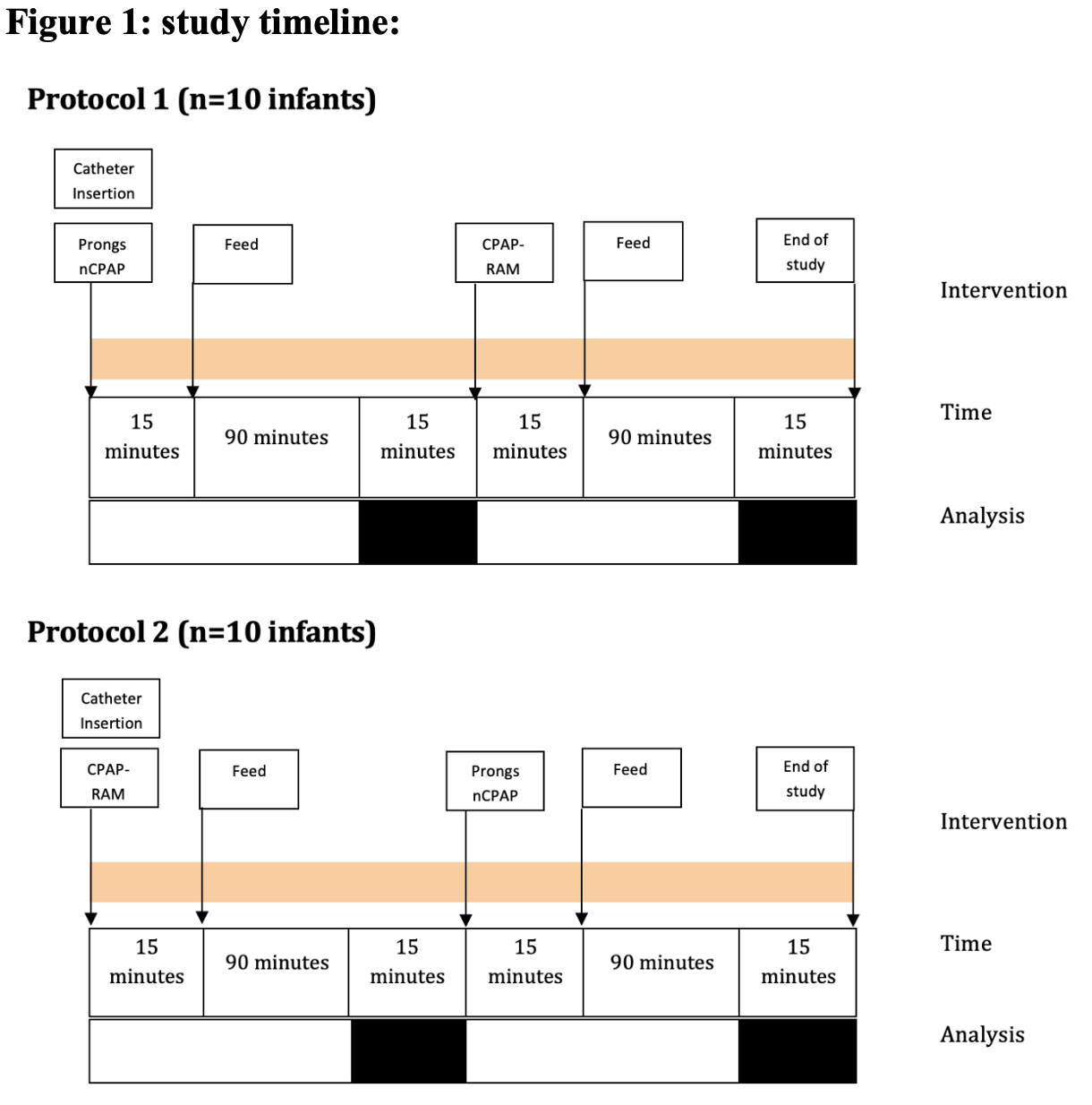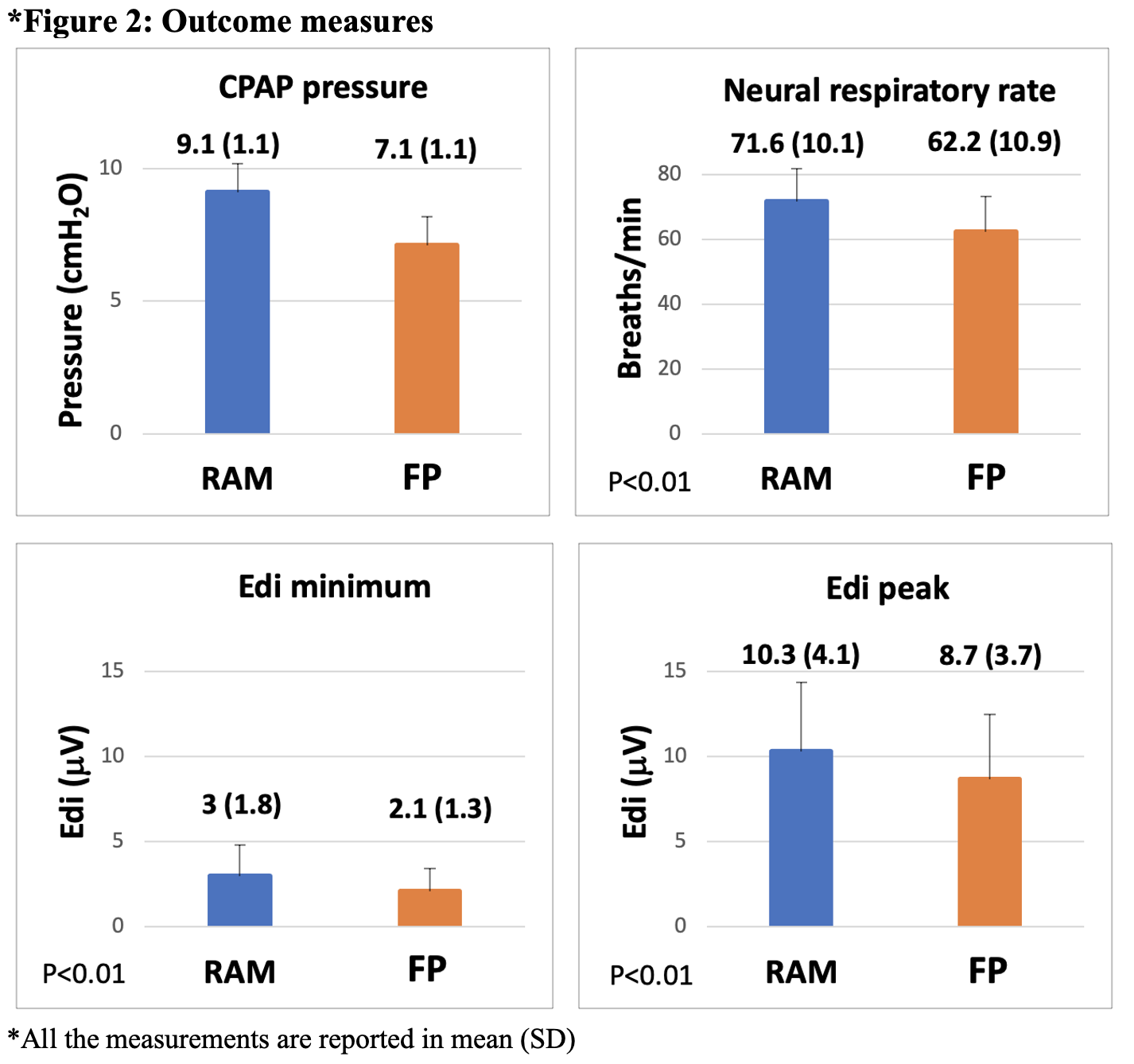Neonatal Respiratory Assessment/Support/Ventilation
Neonatal Respiratory Assessment/Support/Ventilation 4: Surfactant and NIV 1
655 - Effect of nasal continuous positive airway pressure (nCPAP) with RAM cannula versus standard binasal prongs on diaphragm electrical activity (Edi) in preterm infants. A randomized cross-over study
Publication Number: 655.442
- MS
Maher Shahroor, MD
Neonatologist
Sunnybrook Health Sciences Center
Milton, Ontario, Canada
Presenting Author(s)
Background:
The Neotech RAM cannula® (RAM) as an interface to deliver nCPAP has increasingly been used in preterm infants. However, the level of support provided compared to standard short binasal prongs ‘Fisher and Paykel®’ (FP) is uncertain. There is concern that nCPAP pressure delivered via RAM is less than FP due to leak around the prongs. Therefore practitioners often increase the nCPAP pressure by approximately 2 cmH2O when using RAM. Measurement of the electrical activity of the diaphragm (Edi) can be used to assess an infant’s neural breathing pattern with different interfaces and pressure settings
Objective:
We compared the effect of RAM vs. FP to deliver nCPAP pressures in preterm infants using measurements of Edi
Design/Methods:
Stable Preterm infants supported with nCPAP (FP 5-8, or RAM 7-10 cmH2O, FiO2< 0.35) were randomized in a crossover design to receive 2 hours of support with each of FP and RAM. RAM pressure was 2 cmH2O more than FP (fig.1). Only the order of interface application was randomized. A GETINGE® Edi feeding catheter was inserted for continuous Edi measurement; the final 15 minutes of the 2 hours epochs were analyzed
Results:
Twenty infants with a median (range) gestational age of 26 (23-29) weeks, birth weight 892 (400-1071) g, and postmenstrual gestational age at enrollment 31 (28-36) weeks, weight of 1295 (780-2816) g. As shown in fig.2, all infants showed significantly higher Edi peak, minimum, and a higher neural respiratory rate with RAM compared to FP. During the study period, the maximum FiO2 requirement while on FP vs. RAM was mean (SD) [0.28 (0.04), vs. 0.29 (0.05), p=0.8]. No safety concerns were noted
Conclusion(s):
In this cohort of preterm infants, all infants showed greater diaphragm activity assessed by neural breathing patterns when RAM cannula was used vs. FP to deliver nCPAP despite increasing the pressure by an extra 2 cmH2O with RAM. This finding suggests that the RAM cannula may provide a lower level of respiratory support, likely as a result of increased nasal leak and/or high resistance to airflow

